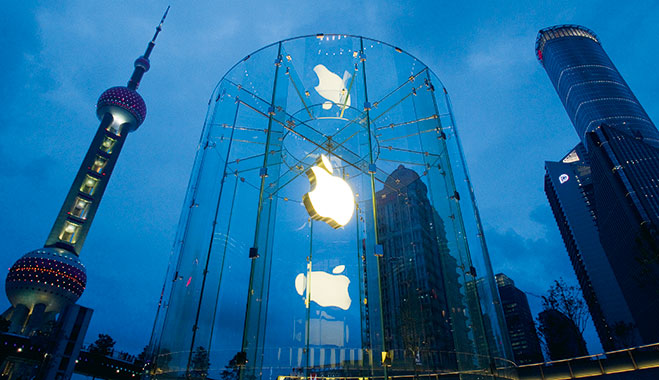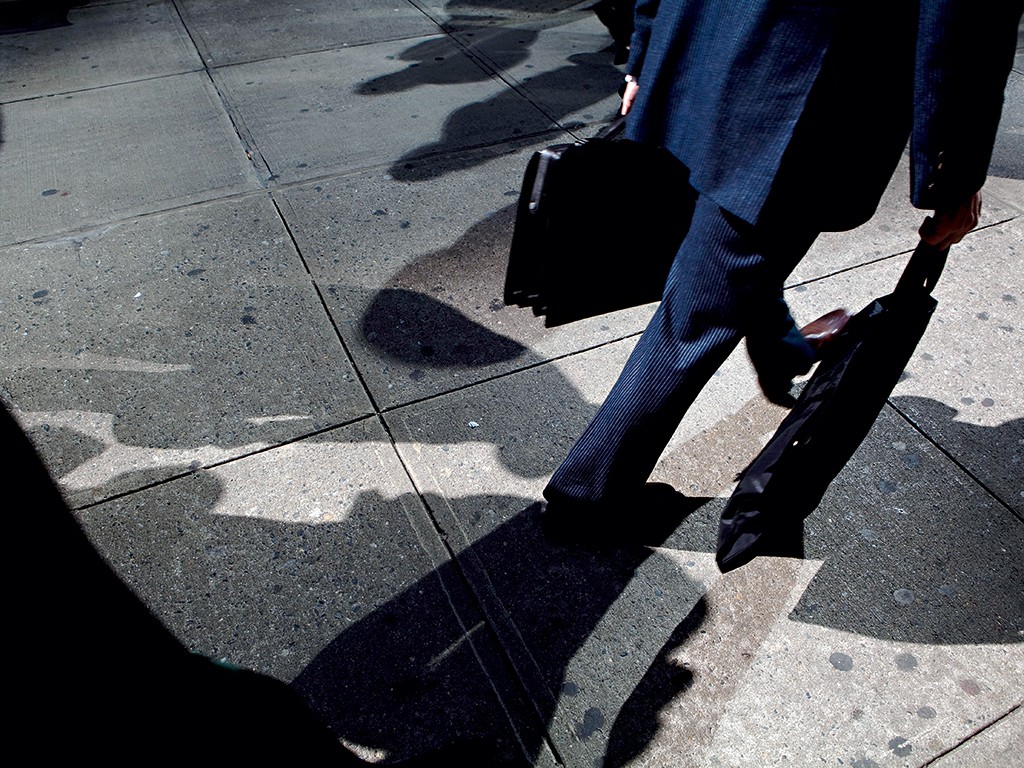Taking a chunk out of Apple
While shareholder demands for Apple to distribute cash have been dismissed as short-termism, they may be in Apple’s best interests

Above A view of the Apple Store in Shanghai, China. The company’s growth has seen it open more than 400 stores in 14 countries
I recently examined the problem of corporate short-termism from two nonstandard angles. One was that some short-termism is sensible. Large firms face an increasingly fluid economic, technological and political environment – owing to more global and competitive markets, to the greater potential of technological change to alter firms’ business environments, and to governments’ growing influence over what makes business sense. In this fluid environment, large companies must exercise great caution before making large, long-term commitments.
Second, I described how emerging data could suggest measurement problems with the conventional wisdom that more rapid trading in financial markets is making them more orientated to the short term than ever before. Proponents of this view highlight furious trading in New York and London, with average holding periods for major stocks diminishing in recent decades.
In fact, the change may be driven by a rapidly trading minority and not by major stockholders shortening their holding periods. Indeed, the average holding period for America’s core shareholders, like Fidelity and Vanguard, has increased in recent decades.
Too much money
The shareholder activism around Apple highlights the importance and controversy of the short-term problem. Apple has been spectacularly successful in the past decade. Its products, from iPhones to iPads to MacBooks, have captured consumers’ imaginations, remade markets, and earned the company and its shareholders huge sums of money. Apple’s stock capitalisation has soared and it became the world’s first trillion-dollar company.
As Apple’s profits have grown, it has amassed $137bn in cash, according to a recent count – more than it can profitably use (at least for now) in its operations. So the company has wisely left its cash invested in global financial accounts, rather than business opeations. Meanwhile, its staggeringly successful products are generating still more cash to handle and stockpile.
Enter shareholder activist David Einhorn, whose hedge fund Greenlight Capital has been pressing Apple to distribute a healthy fraction of that cash. Much commentary on the foray has been negative: Einhorn’s proposal is a short-run, financial-engineering idea for a company that has gone from success to success, it is said – American stock-market short-termism at its worst.
Maybe it is. Maybe investors are being too quick to put pressure on a great company. But, odd as it might seem, getting its cash out could be a good long-term strategy for Apple.
As Apple’s profits have grown, it has amassed… more than it can profitably use
Born, grow, die
There has long been a life cycle for firms: young firms innovate, are cash-hungry and have to scramble for financing. Some succeed, sell their products and find themselves pulling in more cash than they need. Great companies take that cash and invest it in even better products, taking the firm to new heights. Apple has been one of those companies. But, inevitably, the firm’s technologies become standardised and commoditised.
New, hotter technologies come along and the firm no longer attracts the best people to work for it, because, well, it’s no longer the next new thing. The company’s new products stall, old products are not as profitable as they once were (because competitors have figured out how to make something better), and markets and consumers move on.
Firms that reach this point, and that know it themselves, will then often return more of their cash hoard to their investors, who go on to invest it elsewhere. In the 1980s and 1990s large swaths of American industry – especially the domestic oil industry – faced this problem, described by the economist Michael Jensen as the managerial challenge of handling free cash flow well.
Where is Apple in that company life cycle? Is it still in its youth, cash-starved with more ideas than it can finance? Is it middle-aged, but nimble and able to remake itself, as it did several times during Steve Jobs’ tenure? Does it need $137bn to engineer and finance a large-scale Apple TV that will be even more successful than iPhones and iPads?
Or has the company peaked? Could the rollout last fall of the inferior Apple Maps, which sent people to the wrong destination – causing severe public embarrassment and leading to a managerial shakeup – foreshadow a time when Apple’s best days are behind it? The company could be at a high plateau and could stay there for years, even decades, but does it really need $137bn in cash for new investments?
Short term for the long term
Here is another way of looking at the problem: if Apple continues to succeed, won’t it generate the cash it needs to innovate away from super-products like the iPad, iPhone and MacBook? Roughly 70 percent of Apple’s revenues come from the iPhone and the iPad. Will those products last, or will they be superseded? Were those products’ success the result of a unique Apple asset, namely Steve Jobs, or could the company still produce the next big thing? Could it be too tempting in the short run to keep $137bn in the bank, so that Apple’s management spends some or all of it on investments that fail to pan out in the long run?
It is at least possible – maybe even likely – that Apple’s best long-term move would be to release a hefty portion of unused cash to its shareholders, who would then plough it back into the economy. Meanwhile, it can finance its next new thing from the cash its great products will continue to generate. What is being criticised as short-termism could well be a long-term financial strategy that is just right for Apple.













